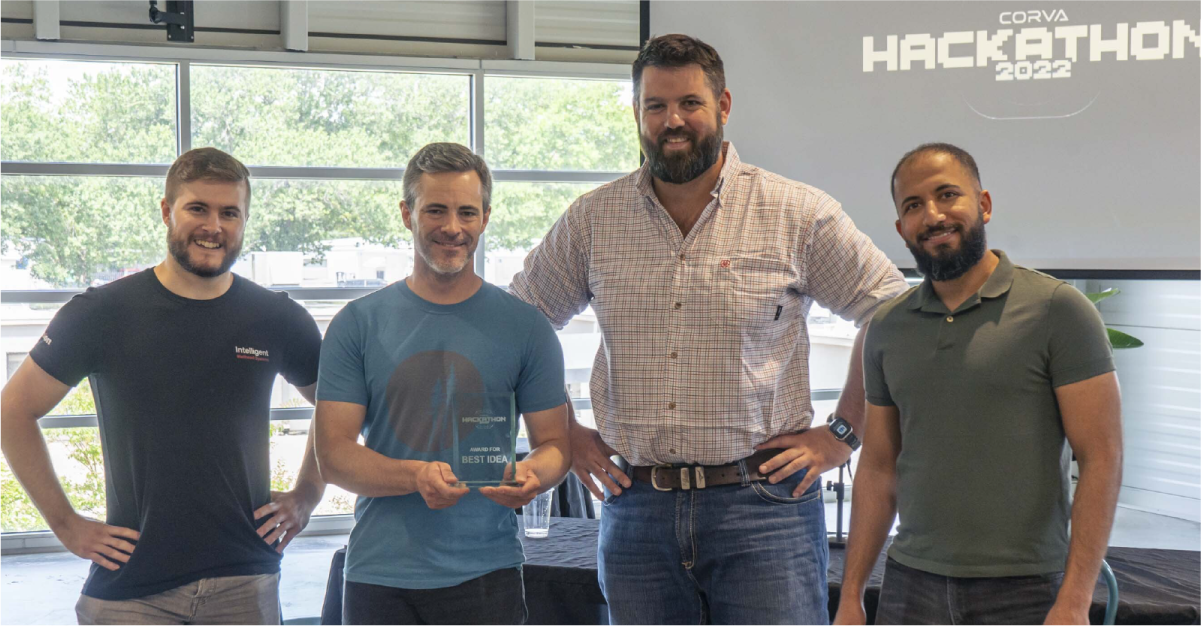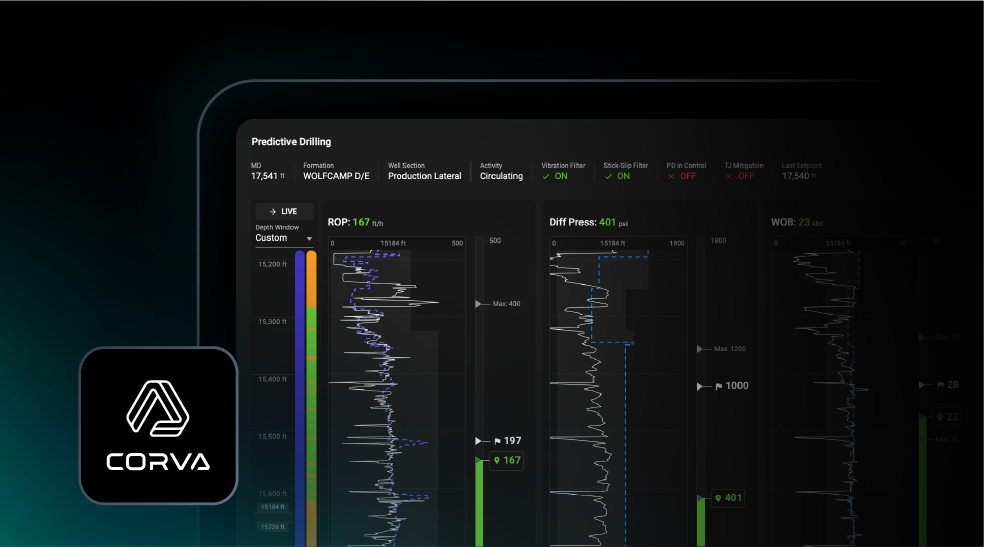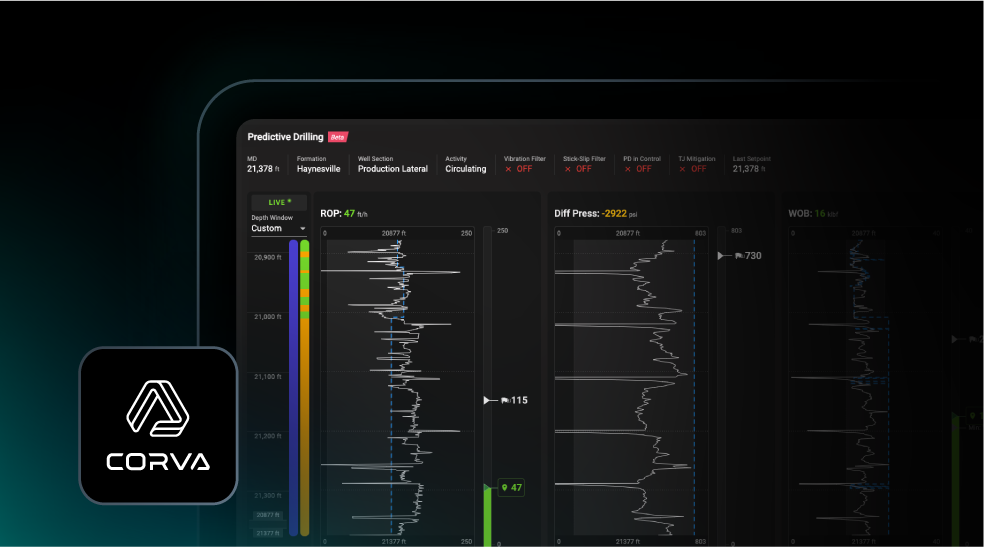Corva’s Dev Center allows companies to build apps quickly, cutting down both the cost and time spent on normal development, while still allowing them to own the IP of whatever they made. In our second annual Hackathon, we put that statement to the test by inviting 9 teams from within the energy industry to build apps that would be ready to demonstrate within just 24 hours. The teams came from the following companies: Baker Hughes, ConocoPhillips, Exxonmobil, Intelligent Wellhead Systems, Newpark, NexTier, Oxy, Shell, and Texas A&M.
Teams arrived the morning of July 14th ready to start, and took their ideas from just the base concept up to a functioning product ready to show by the next morning on the 15th, where they had to present before a panel of judges.
Our awards were based on 3 main categories: Best Idea, Best Impact, and Best Execution. Our panel of judges featured Corva’s own Director of Product Greg McDonald and VP of R&D Curtis Cheatham, along with Joe Ransegnola, a Senior Solutions Architect from MongoDB.
While we had many great contenders this year, our judges could ultimately only give out the 3 top awards. Here are the companies that took each category:
Best Idea: Intelligent Wellhead Systems
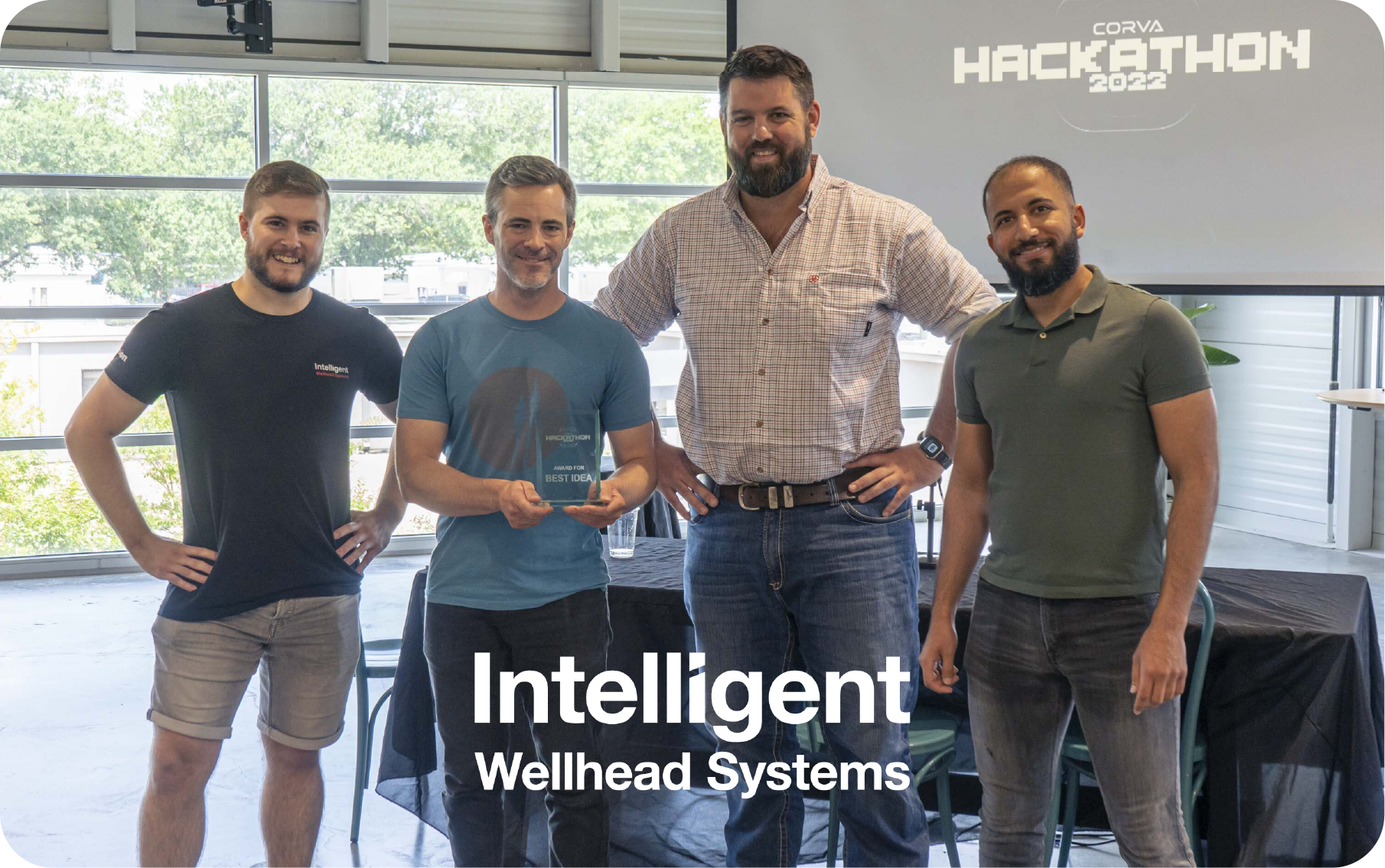
Intelligent Wellhead Systems designs, manufactures, and deploys digital safety and efficiency workflow technologies that improve oil and gas well completion operations. A large part of their portfolio involves improving workflows for remote operations, and their team brought a groundbreaking question for themselves to solve: How can we get real-time visual feeds of the operation site?
Their solution was the Remote Operations Camera Controls app, which featured the ability to maneuver and view through a camera on-site from anywhere in the world. Their camera views could be paired alongside the full suite of Corva apps as part of a dashboard, allowing operators to get the full picture as they make real-time adjustments to equipment from remote locations.
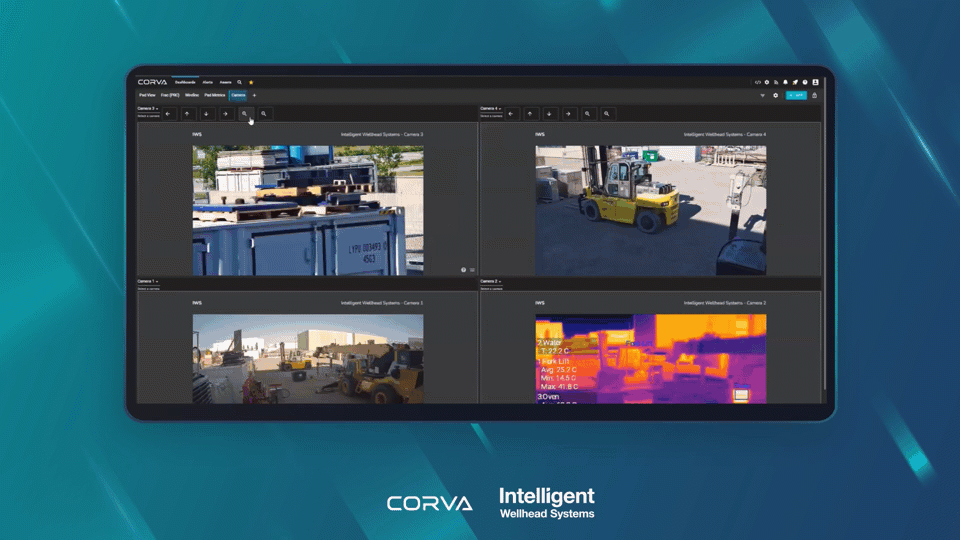
As a part of their demo, they controlled a piece of equipment in another country from our location in Houston, showing how they would be able to see valves opening and closing. They also had an infrared camera, which could be used to identify potential leaks on the wellhead. To protect the security of the camera feed, they used permissions and access hierarchies to limit who could view and control these cameras.
Overall, their idea has many implications for both safety onsite and for improving efficiency and accuracy in remote operations.
Best Impact: NexTier Oilfield Solutions
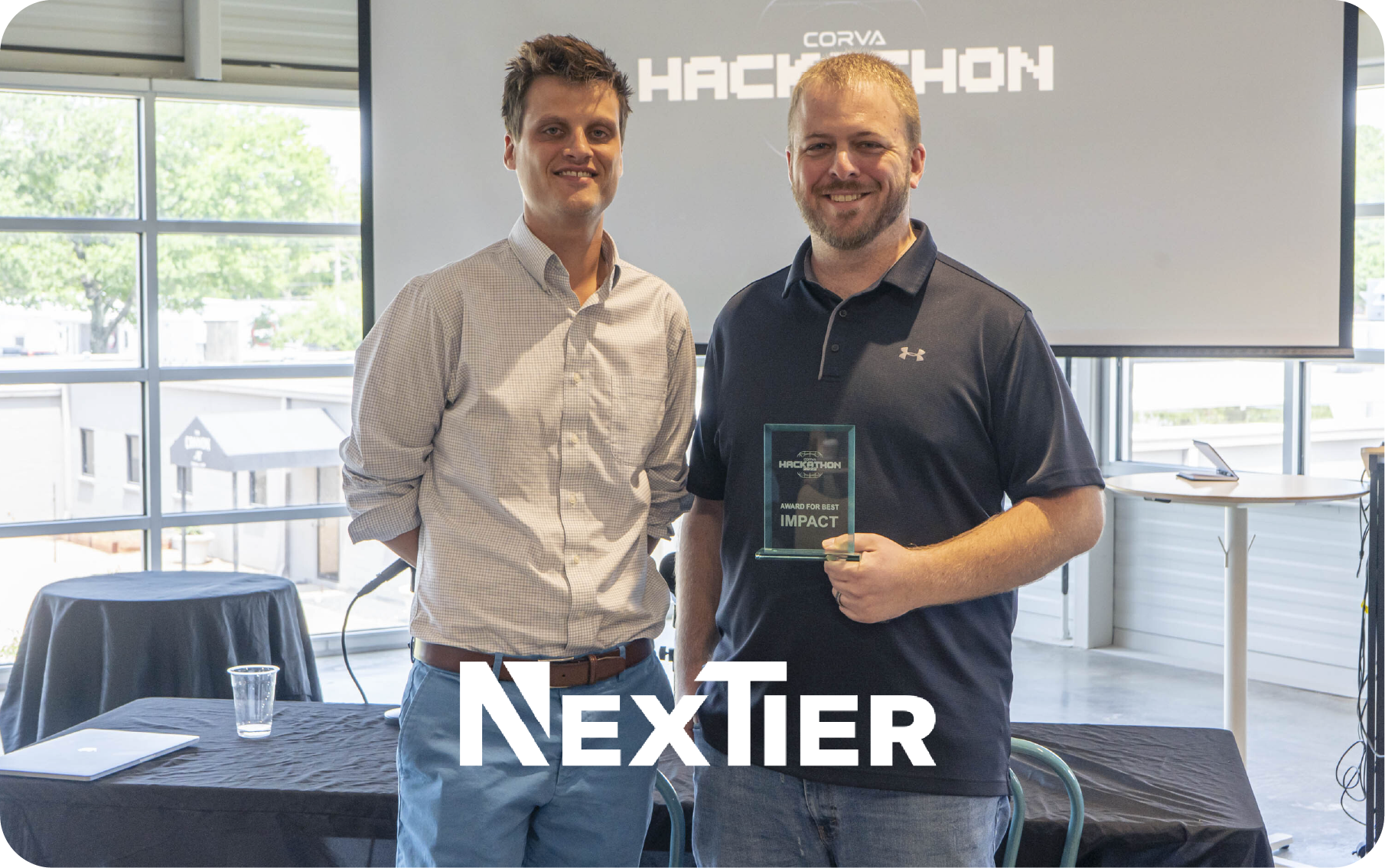
NexTier Oilfield Solutions offers an advanced digital infrastructure and an unmatched portfolio of natural gas-powered equipment to reduce fuel costs and emissions. Utilizing their own experience in the completions field, they identified the industry problem that saw a need for a tool that could easily monitor source water for frac operations.
Specifically, they found that the lifespan of the frac iron used onsite was directly affected by the chemicals that the source water was treated. This situation impacts the safety onsite, increases downtime due to failed high-pressure iron, and leads to additional equipment maintenance costs.
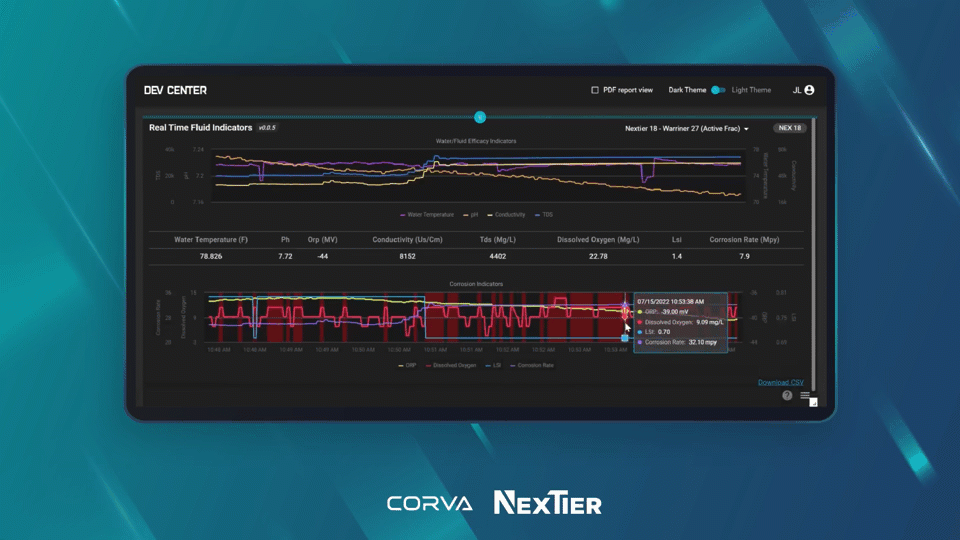
Their solution was The Real-Time Water Analysis app, which uses a line graph format to visualize different properties of the frac source water. In real-time, it shows the levels of total dissolved solids, iron levels, pH, and other water characteristics.
The real-time water analysis made possible through the app will have a direct impact on the decision-making for frac chemical concentrations, allowing for more real-time adjustments that will reduce frac equipment degradation and improve safety. It also provides valuable data to customers about frac water quality for customers to properly treat the frac source water and facilitate an honest discussion on water quality to see if it's being over-treated.
Best Execution: Oxy
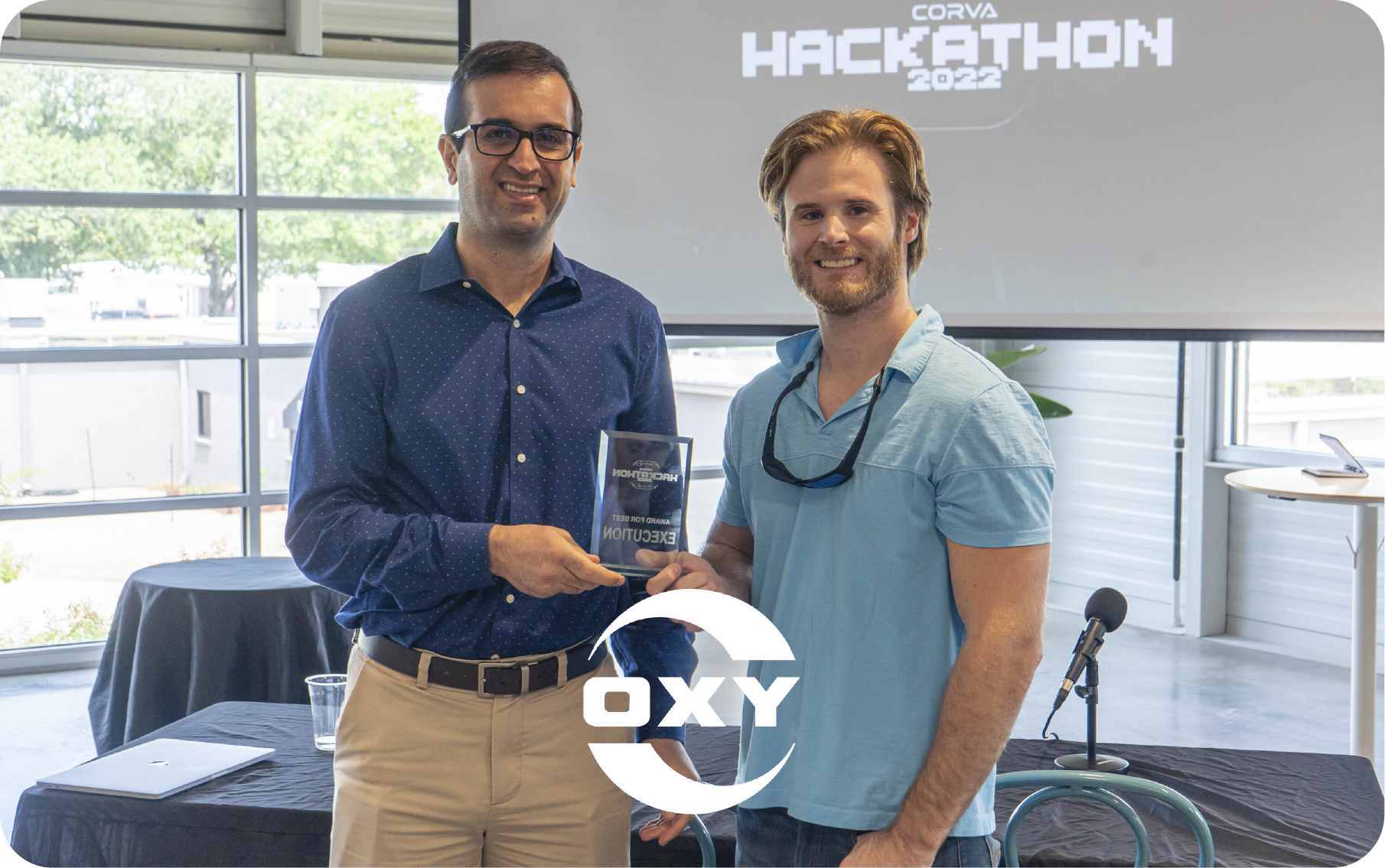
Oxy has developed extensive assets, infrastructure, and expertise to fuel progress and innovate new technologies that will pioneer the future of energy. The goal of their team at the Hackathon this year was to build a tool that would assist with well planning.
Their solution was the OptiPath app, which featured fully 3D wellbore path optimization and visualizations. Their app was fully operational and ready to deploy throughout their company, all done within 24 hours of development time.
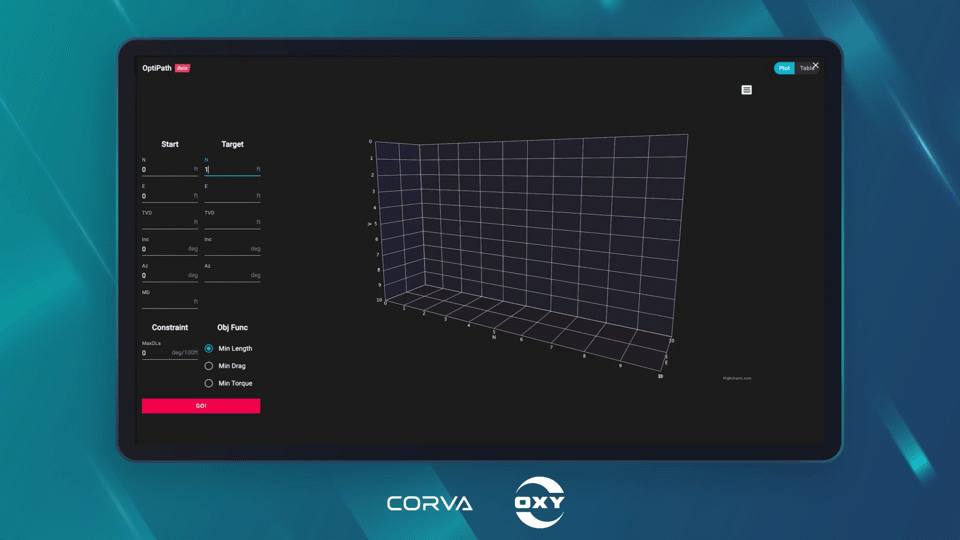
This app takes the following user inputs: curve starting point (survey), the target landing point (survey), a maximum dogleg severity, and a choice of curvature method. The 3 methods available are minimum length, minimum drag, or minimum torque. Using multiple open-source algorithms, the app outputs a table of the planned survey stations and maps these points in a 3D model.
This variety of inputs allows the graph to be customized to best fit the needs of the site, using different inputs to receive the results of new scenarios for the wellbore curve, allowing for accurate predictions with a 3D view.
Our Additional Competing Teams
While not every team could come away with a trophy, each brought an amazing idea to the table and made giving out these top awards a tough decision. Check out what the other teams developed:

Our team from Texas A&M was comprised of graduate students looking to put their learned skills to the test. They built the ESG Calculations app, which visualizes gas use and emissions data, allowing operators the chance to create cost-saving opportunities by reducing emissions.

Baker Hughes is an energy technology company that has a diverse portfolio of equipment and service capabilities that span the energy and industrial value chain. Their team designed the Bit Wear Prediction app, which aimed to improve the decision-making capabilities cantered on bit is needed to be pulled.

ConocoPhillips is one of the world’s largest independent E&P companies based on production and proved reserves. They had two teams competing, one for completions and another for drilling.
Their completions team built the Drillout Plug Identification app, which creates a user-input option for the drill out traces app for plug identification, allowing users to identify and annotate plugs during a coiled tubing drillout operation. Their drilling team built the Hookload WOB app, which sought to extract knowledge through the hookload and increase the amount of weight a drilling operation can manage.

ExxonMobil develops and applies next-generation technologies to help safely and responsibly meet the world’s growing needs for energy and high-quality chemical products. Their team developed the Cuttings Return Rate Calculator app, which leverages Corva’s real-time data to look at trends as they happen to calculate the cutting rate.
Newpark Fluid Solutions seeks to help customers improve efficiencies and sustainability of their operations while delivering reliable and environmentally responsible solutions. Their team created the Real-Time Hydraulics Enhancements app, which aimed at optimizing mud rheology to remove the cuttings more efficiently, making hole cleaning more proactive.

Shell uses advanced technologies and takes an innovative approach to help build a sustainable energy future. Their team built the Mechanical Power Usage app, which uses powerful visualizations to give a clear snapshot of performance to engineers as they drill.
Paving the Way to the Digital Future
The future of energy is digital. Our 2022 Hackathon gave multiple teams from across the energy industry the challenge of creating a tangible solution to real industry problems in less than a day. Through the power of Corva’s Dev Center and help from Corva’s Development Team, they made their ideas into reality.
Learn more about how our Dev Center can help you cut development time and costs while still maintaining IP here.
